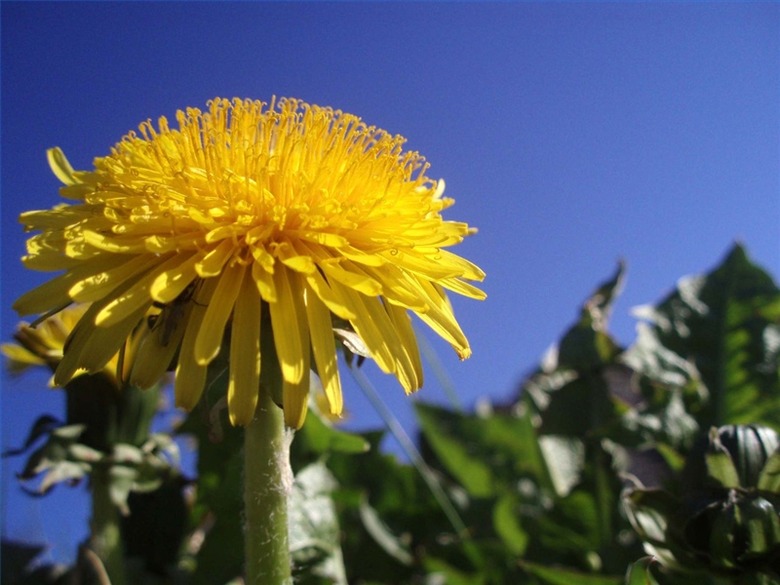Dandelion Flower Facts
Viewed by some people as a weed and others as a beneficial herb, dandelions are a ubiquitous garden presence no matter how you see them. Learning the facts about this flower will help you know what to do with it, whether to dig it up or add it to your salad.
Flower Details
Dandelions are a perennial plant that grows best in full sun with moist soil. Once the plant is established, though, it can handle shade and water deprivation. The plant bears bright yellow, round flowers, and leaves that have a tooth-like shape. The plant's name comes from the French phrase dent de lion, or lion's tooth.
The roots of the dandelion can extend as far as 15 feet into the ground, though they are usually 6 to 18 inches deep. Any broken parts of the plant excrete a milky white substance. The flowers grow all year, without pollination, and once they ripen completely they turn into seeds that can fly away and grow new plants.
Uses
Dandelions have many culinary uses. All parts of the plant can be eaten, including as part of salads, cooked or sauteed, even fried. Dried dandelions are used to make tea, and the flowers can be turned into wines.
Dandelion flowers can also be used in decor, and the plant has traditionally been used for medicinal purposes.
Health Benefits
Dandelions are rich in beta carotene, iron, calcium and vitamin A. They are known as an effective diuretic, and have traditionally been used to help in the treatment of the liver and gallbladder, including aiding in removing gall stones and helping to decrease liver swelling. Dandelion can also help with minor indigestion.
The white sap of the plant can also be used to improve skin complexion and to help heal skin blemishes such as blisters.
However, according to the National Institutes of Health, dandelions have not been scientifically proven as a medical treatment.
Spread
After dandelion seeds are carried away from the plants by the wind, they can fly for miles. After landing, the seeds can sprout right on the soil's surface at any time of year, which allows new plants to grow easily. If the plant is cut off, it can also regrow.
Dandelions are hardy plants, and easily adapt to difficult growing conditions, such as dry soil or competition with plants such as grass.
Control
Because dandelions germinate so easily and are challenging to kill, they can be difficult to remove from grass, gardens and orchards.
If you want to remove dandelions from your yard, dig out single plants as soon as you spot them, before they have time to produce seeds. Keep an eye on the plant's location to be sure it doesn't return. If there are many plants growing in a single place, cut off the flowers so they can't become seeds and then control the area by covering with landscape fabrics or seeding more turf grass. You can also try spot treating with herbicide. In an orchard, try planting a cover crop that will choke out the growing dandelions.
